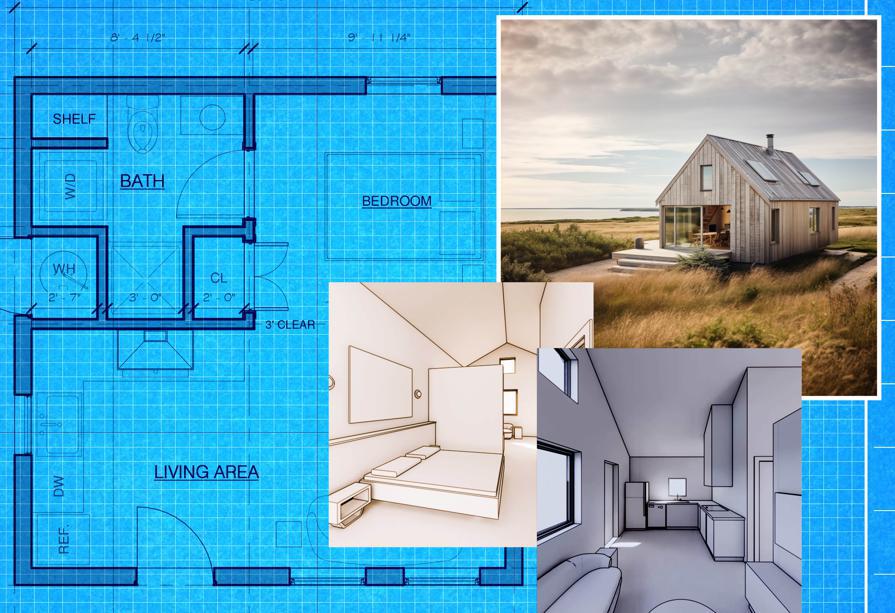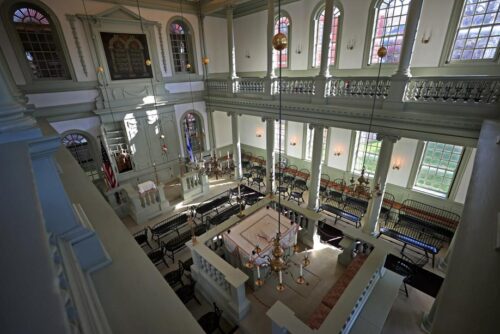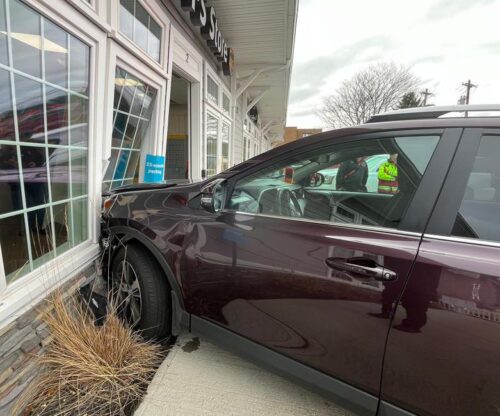
Jillian Rene “J.R.’’ Coffin is the founder of Dwelly, a Rhode Island-based startup whose primary focus is to grow New England’s housing stock through the design and construction of Accessory Dwelling Units (ADUs), which are also often called “tiny homes’’ or “granny flats.’’ These are smaller, independent living spaces located on the same property as a primary single-family home, and seen by some proponents as a tool to help America’s housing crisis.
Q: How are Dwelly’s ADU’s unique?
Our digital ready-made Accessory Dwelling Unit plans are sustainable, beautiful, and tailored to our local landscape. Essentially, we’ve taken a process that’s typically complex and expensive and made it streamlined, cost-effective, and better for the environment.
Q: How does Dwelly fit into your own background?
I’m an architect by trade focusing mainly on multi-family developments. Working in the design and construction industry I’ve always felt it was my responsibility as an architect to guide people to make sustainable decisions. Dwelly is my solution to the complex relationship between affordability, sustainability, and housing.
Once I launched my own firm, initially called Studio Den Den, and shifted my focus from high-rises to small multi-family and single-family projects, I noticed a growing demand for flexible, smarter housing. People loved the idea of ADUs, but they kept running into obstacles. Either the permitting process was overwhelming, architects were too expensive, construction costs were unpredictable, or they just didn’t know where to start. I started Dwelly because I wanted to help more people and I knew there had to be a better way. So I started creating an architectural construction documents package that was replicable and took the guesswork out of the process so that sustainable ADUs were something that anyone could build.
Q: Can you elaborate on Dwelly’s commitment to sustainability and how it shapes the company’s designs?
We need to create more housing in a big way. At the same time there is a lot of poor-quality construction in New England that went up too fast and is now deteriorating. I want to make sure that the ADUs that are going up over the next few years are built to last and consider the health of our environment and the families living in them. So every decision we make, from the materials we choose to the way we design our building envelopes, is about efficiency and longevity. In our ready-made plan sets we focus on airtight construction, high-performance insulation, and smart mechanical systems to create homes that are comfortable, healthy, and incredibly energy-efficient.
Q: How does Dwelly balance affordability with eco-friendly construction ?
It’s an ongoing balancing act. A lot of people assume that sustainability equals high costs, but that’s not necessarily true. The key is knowing where to invest. By standardizing our designs, we eliminate many of the upfront expenses associated with custom architecture. We also try to specify materials that are readily accessible — reducing your carbon footprint and making it easier for contractors to build. But most importantly, how we design our ADUs saves homeowners money in the long run — lower energy bills, less maintenance, and a home that holds its value over time.
Q: How have recent legislative changes in Rhode Island impacted development of accessory dwelling units, and how does Dwelly navigate those regulations?
Following Massachusetts’ lead, Rhode Island recently passed legislation making it legal to build ADUs on any residential property by right. This opens up opportunities for homeowners who might not have been able to build before, whether they’re looking to create rental income, house a family member, or downsize while staying in their community. But even though the law has changed, the permitting process can still be tricky.
Q: How much does a single unit cost to make, on average, and how much do you sell them for?
Costs vary depending on size, finishes, and site conditions, but in general, building a high-performance ADU costs between $150,000 and $250,000. We’ve designed our system to be as cost-efficient as possible while maintaining quality.
Q: How many units does Dwelly typically construct per year?
We offer the plans for permitting and construction so we don’t have exact numbers on the completed construction at the moment. But we’re in the process of scaling up because we’ve seen such a huge uptick in demand for ADUs with the new legislative changes in Rhode Island and Massachusetts.
Q: A percentage of Dwelly’s proceeds goes toward the Block Island Housing Initiative to help provide affordable housing for longtime islanders. What motivated this partnership?
I have so many amazing memories out on Block Island as a kid so that place is very near and dear to my heart. We are starting with Block Island as a community to donate proceeds towards because housing, taxes, and tourism have increased so immensely that the locals that run the island are getting pushed out and can barely afford to live there. This is a perfect example of how the housing crisis is not only impacting housing costs but making some of the most beautiful places in New England inaccessible to anyone but the ultra wealthy. The Block Island Housing Initiative is doing important work to create more opportunities for longtime island residents to stay on the island, and that aligns with everything Dwelly stands for.
Q: What challenges does Dwelly face, and how do you plan on overcoming them?
One of the biggest challenges is navigating the patchwork of regulations across different municipalities. Every city and town has its own zoning rules, which means we have to stay ahead of the curve. We’re doing that by working closely with local officials and designing our ADUs to be as permit-friendly as possible while offering a solution in the event someone has a unique condition on their lot.
Alexa Gagosz can be reached at alexa.gagosz@globe.com. Follow her @alexagagosz and on Instagram @AlexaGagosz.



